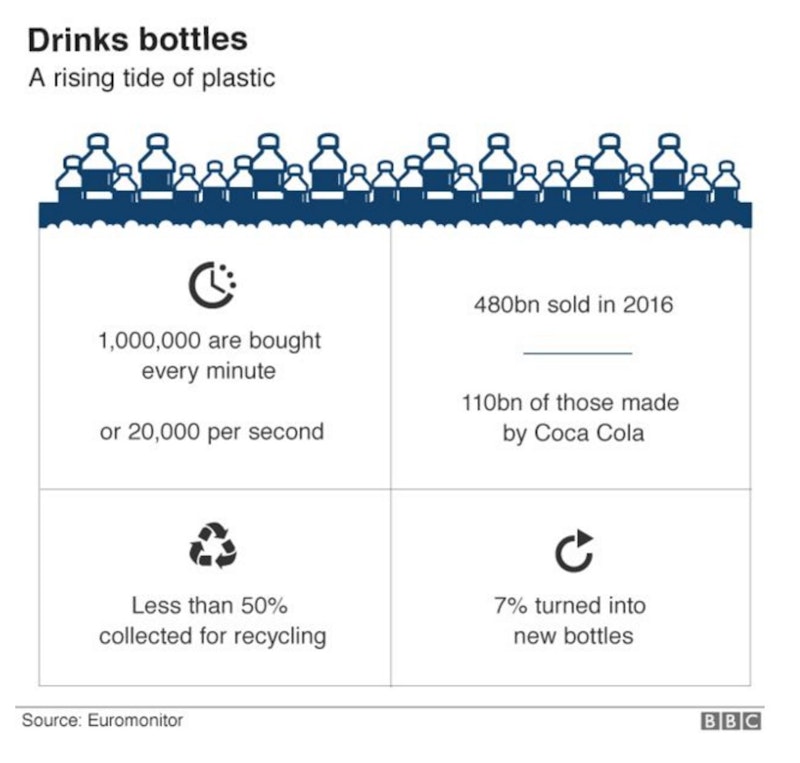In the News
Using the negative externalities of plastic as practice of exam technique
10th December 2017
AS Geoff has just highlighted on the Blog, the issue of the harm caused by plastics, particularly in our oceans, is receiving some high profile coverage at the moment, perhaps particularly in the wake of the fabulous Blue Planet 2 series.
The external costs are huge: according to the United Nations, plastic pollution is conservatively estimated to have a yearly financial damage of 13 billion USD. So this BBC article makes a fantastic stimulus piece to use this year when investigating negative externalities, and what governments can do about them, and could become the basis of an exam technique exercise - and might even work as a nudge to change our own behaviour in the run-up to Christmas consumption!

'Seven charts that explain the plastic pollution problem' gives some pretty thought-provoking data which can be used as great practice of the elusive art of Application of Evidence to illustrate Analysis of a Problem. One million bottles being sold every minute is a pretty stark number showing why this is a problem, particularly when you add it to the fact that less than half are collected for recycling.
There is also the chance to work on Evaluation, with discussion of what government intervention will be most effective in dealing with the problem - will it be through regulation, taxation, information, or is there a nudge that could be used with some behavioural economics?
Students might also enjoy looking at the website of The Ocean Cleanup, a project founded by an 18-year old student in the Netherlands with an impressive CV: he is the youngest ever recipient of the UN’s highest environmental accolade; Champion of the Earth in 2015. Awarded the maritime industry’s Young Entrepreneur Award in 2015 by HM King Harald of Norway. Chosen as European of the Year by Readers Digest in 2017.
The project focuses on the plastic caught in the largest of the gyres of plastic waste swirling around our oceans, which is in the north Pacific, and has the aim of removing half of it in the next five years.
This ambitious plan may sound like pie-in-the-sky, but a look through the project milestones on the website at what they have achieved so far, shows a piece of work that is serious, supported and funded - who is to say that this young man is not right?
You might also like
Stakeholders (Government Intervention)
Study Notes

Why you shouldn't copy your classmates!
16th May 2015

Unintended consequences of the 5p bag charge
6th October 2015
Bounded Rationality (Behavioural Economics)
Study Notes

Smog and the Clean Air Act
27th November 2016
Behavioural Economics Revision Quizzes
Quizzes & Activities

Credit card surcharge bans and government failure
18th January 2018
Energy Price Cap - Analysis and Evaluation Arguments
Exam Support
Daily Email Updates
Subscribe to our daily digest and get the day’s content delivered fresh to your inbox every morning at 7am.
Signup for emails